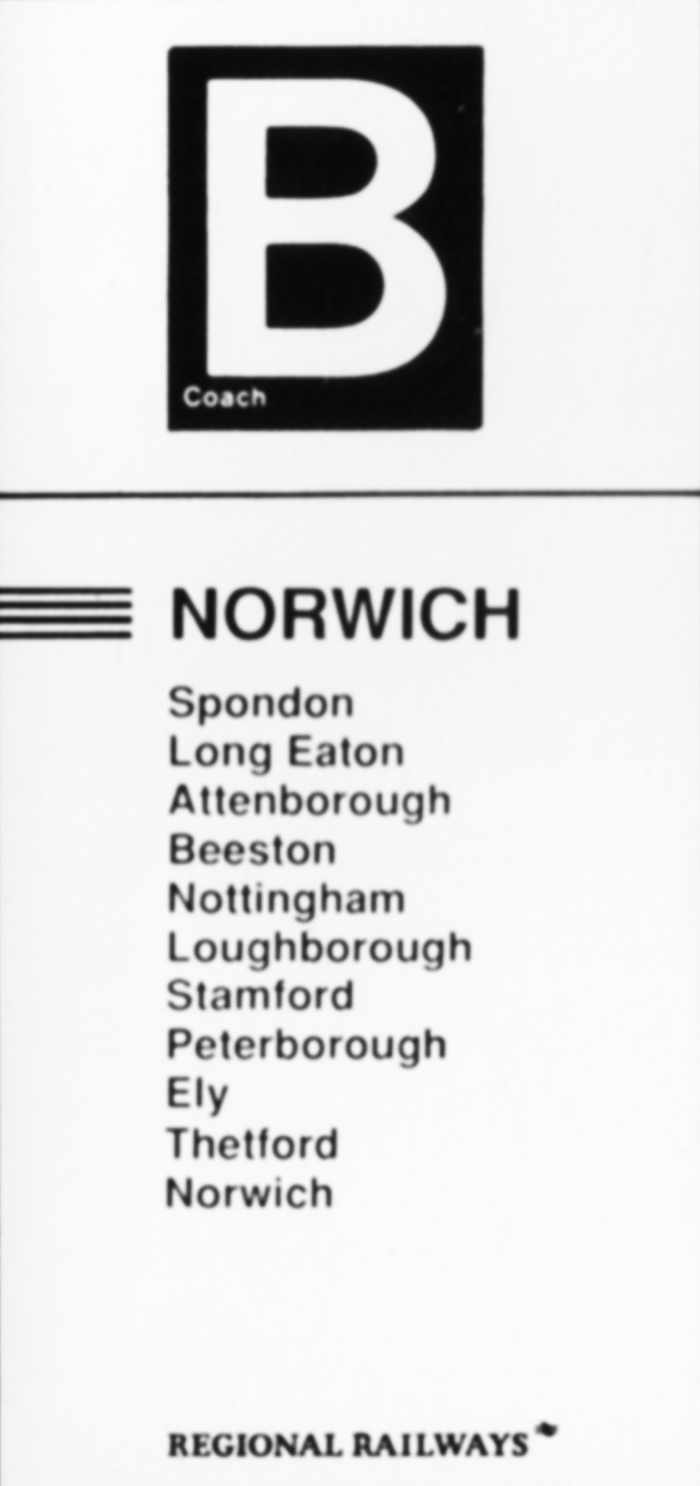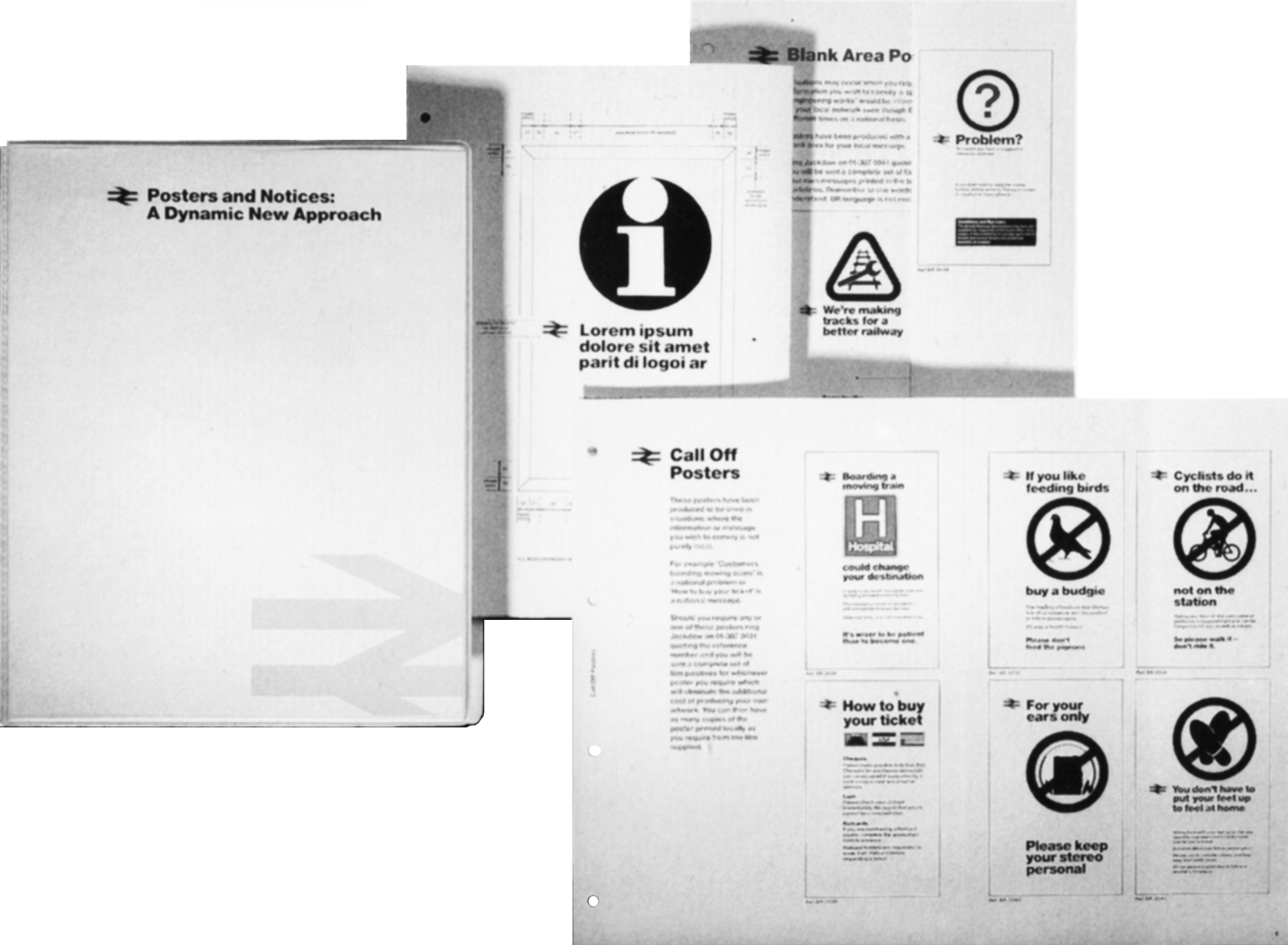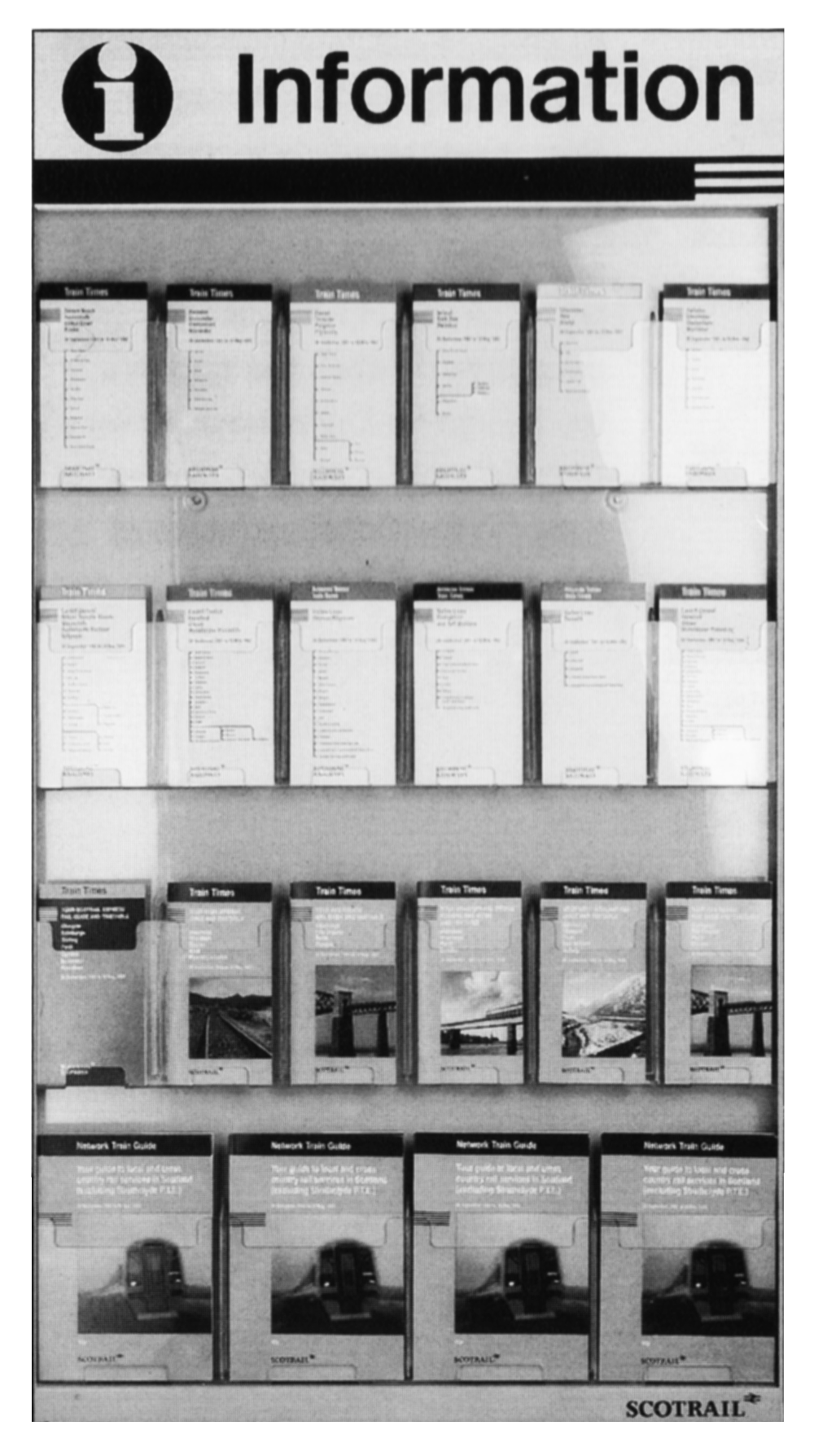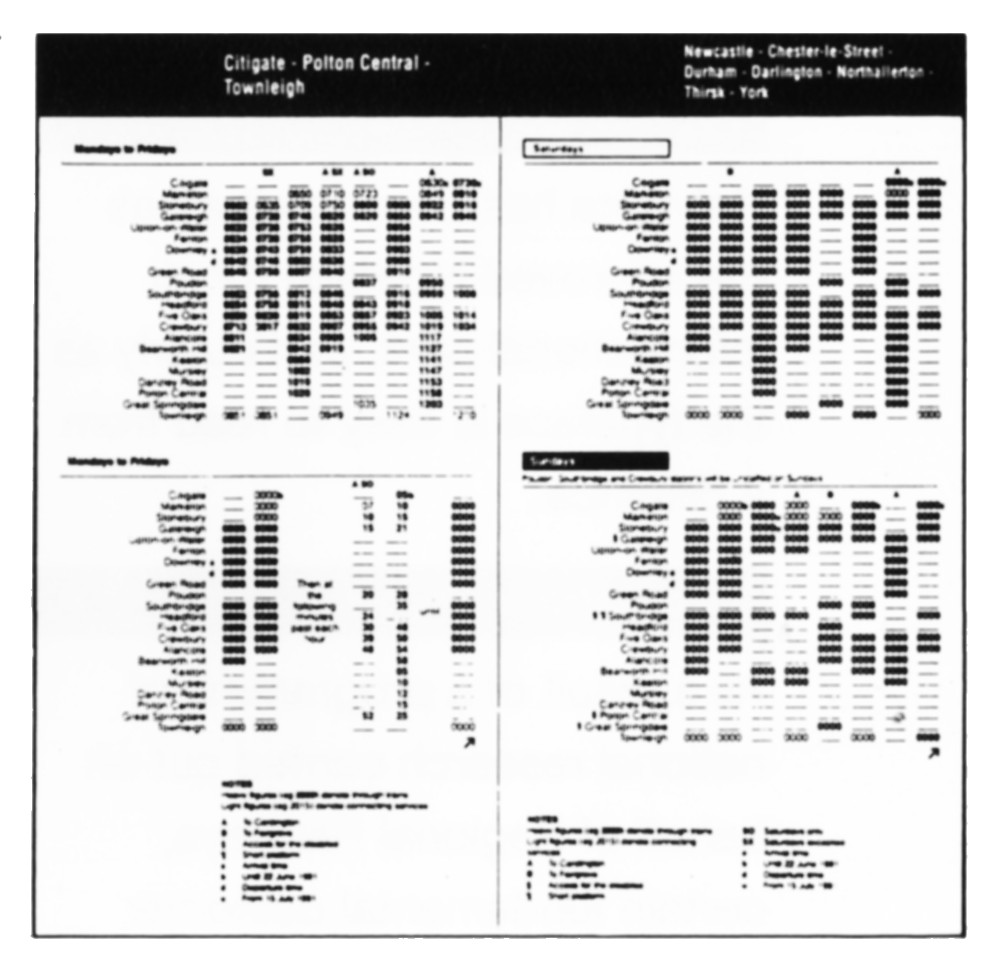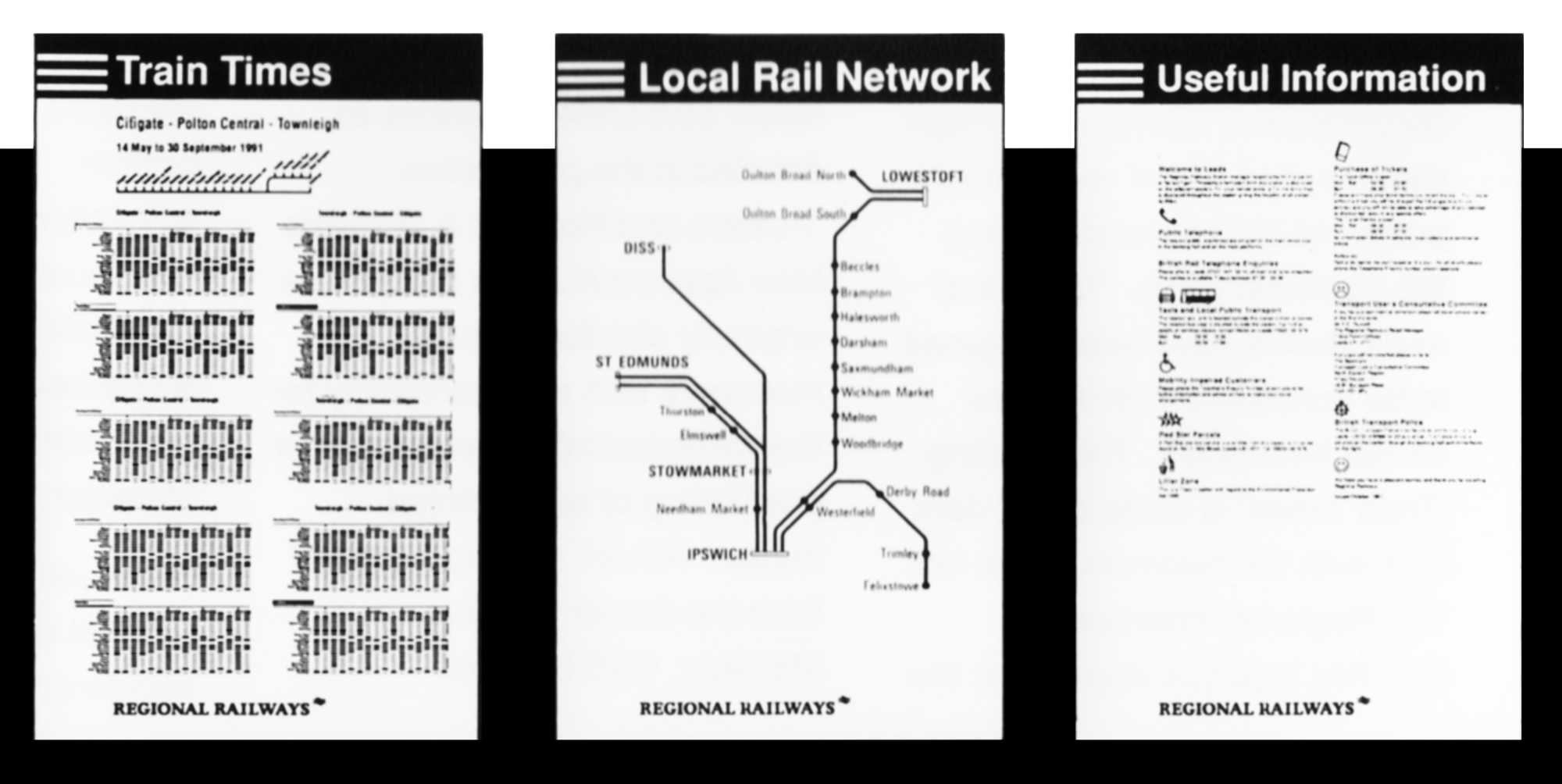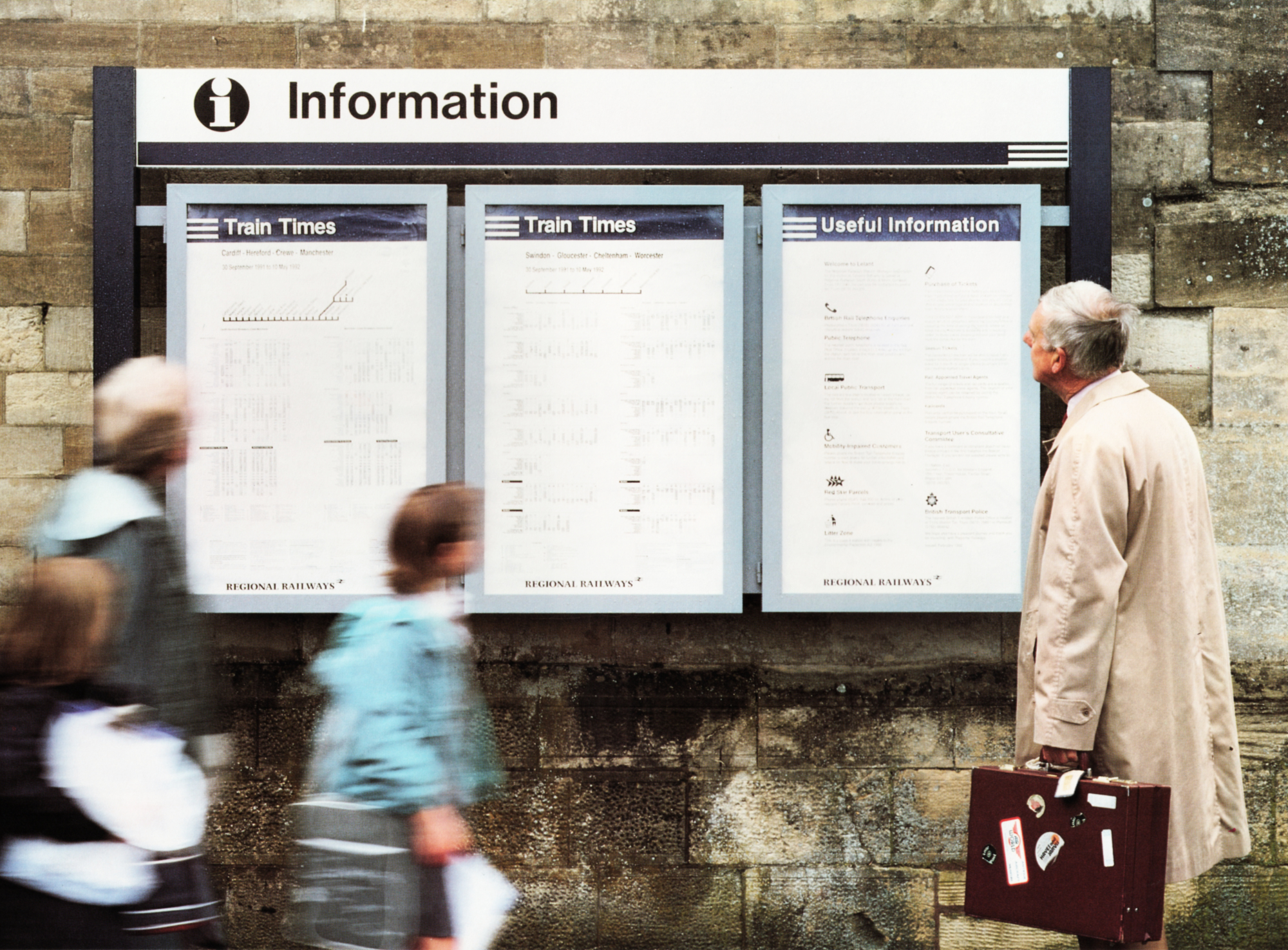
- Timetables
- Departure sheets
- Maps
- Destination labels
- Posters
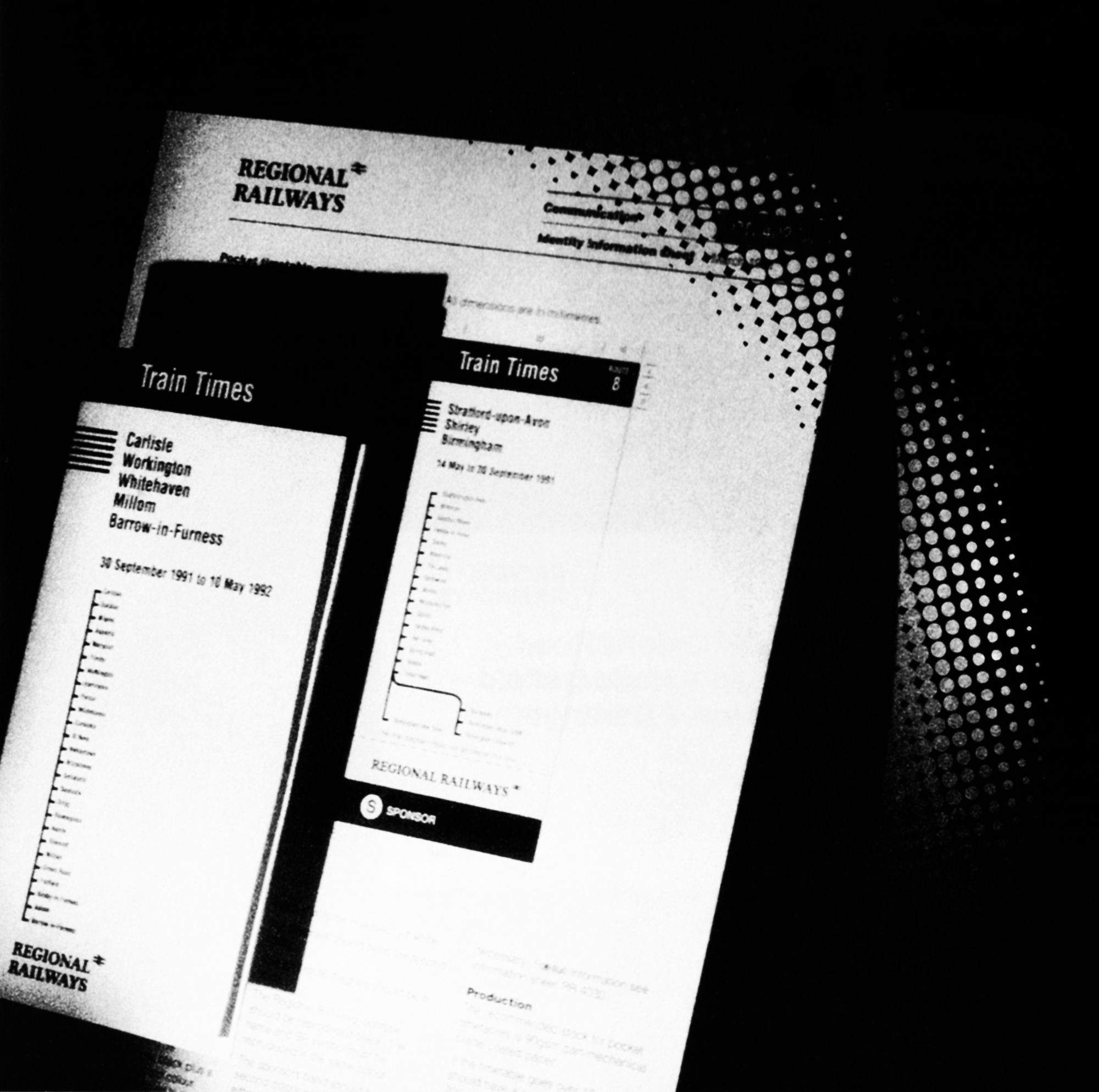
Regional Railways will maintain the British Rail tradition of using the Helvetica typeface to provide its customers with all essential information. It is exceptionally clear and the travelling public is well used to it.
There must be a sharp distinction between information posters and those with a promotional message. The difference must be obvious to the untutored eye. This is one very good reason for using Helvetica to convey information and Joanna to promote ideas. The wording on an information poster also needs to be unambiguous and positive in tone. For example: “As part of our programme to improve the service between X and Y, we shall be undertaking engineering works during the coming six weeks. We regret any inconvenience this may cause” rather than “We regret that due to engineering work, services between X and Y will be disrupted for the next six weeks”. A separate binder on corporate information posters has been produced to help standardise and improve messages to our customers.
A thorough research programme has shown that the great majority of the public prefers a timetable in the form of a booklet with a stapled spine, showing the particular route in linear form on the cover. The Regional Railways pocket timetable will follow that format throughout the network. There is a marked similarity to the InterCity timetable and that is to our mutual advantage since customers will be at ease with both. There are also options for network guides and route cards. There will be two kinds of departure posters, the familiar A-Z listing that is posted at all big stations and the line-of-route departure sheet which will be posted at all the stations along that particular route
The printed destination panels applied to the windows of the rolling stock are an essential part of the process of reassuring travellers. The design, printing and application of these items alone justify a number of information sheets within the Identity Management binder to cope with advice on short platforms, request stops and coach identification, as well as an adapted design for plug-door stock such as the new Class 158.
Maps are essential. There are two types: one to be displayed on the stations in the information structure and another to be posted inside the carriages within specially designed frames. There is a special format for each type to make sure that the style, headings and use of branding as an endorsement is consistent. This is an organisation that is coherent and systematic in its approach to every facet of its operation.

